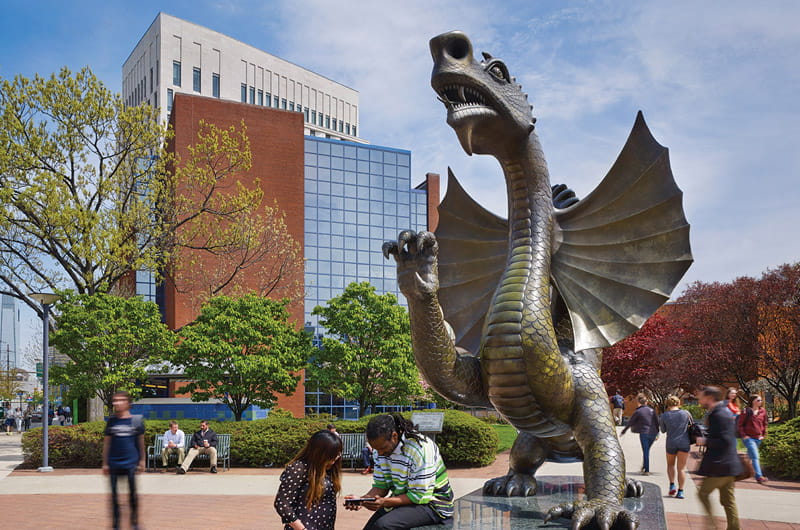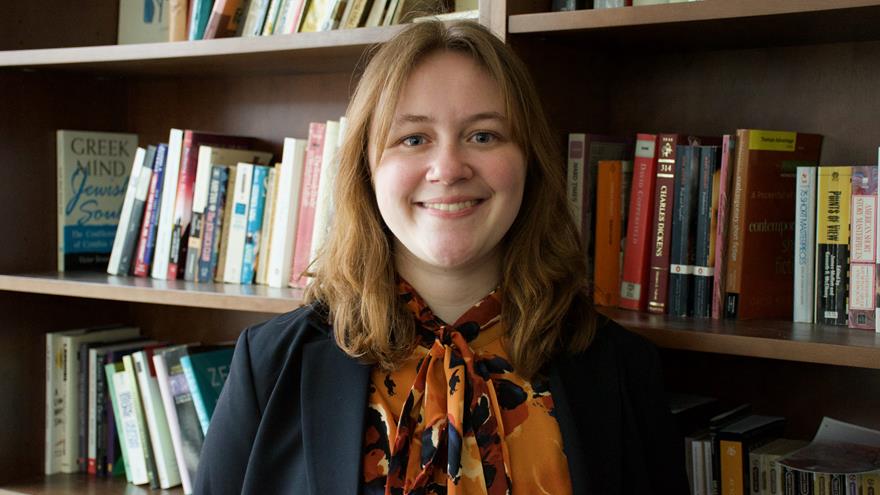Why a Decline in Applications is Good for Drexel
 By Frank Otto
By Frank Otto

Drexel’s new strategy for recruitment and admissions is aimed at boosting the number of students who accept admission offers and continue through to graduation.
Randy Deike, PhD, was hired this spring to serve as the senior vice president of the newly formed Office of Enrollment Management and Student Success, which is at the center of the strategy shift. He describes the efforts, which began during the current recruitment and admission cycle, as a push to bring in “alumni, not freshmen.”
To do so, the University eliminated its past practice of using “Fast Apps” or “VIP Apps” that allowed a large volume of email recipients to apply to Drexel with one click. Doing so will result in a drop of application numbers, but will produce incoming classes more motivated to stay and succeed at Drexel.
Over the last decade, Drexel’s application numbers have skyrocketed, which was not necessarily the best thing for the University.
Deike explains why:
Before my time here, in 2005–06, the University made a conscious effort to increase the applicant pool.
We started using the Fast App. We would pre-populate an email with bio-demographical data and send it to a very large prospect pool and those prospective students could apply to Drexel by clicking a button.

It was very much a direct-marketing approach.
Volume recruitment has significantly increased the number of prospective students applying to Drexel but, unfortunately, many of those students have applied because it was easy and not because they intentionally selected Drexel based on an understanding of the real value of a Drexel experience.
Applications to Drexel grew from 12,000 to approximately 55,000 over nine years, more than a 300 percent increase. A high, 80 percent acceptance rate became necessary, Deike said, because the University’s yield, the percentage of admitted applicants who accepted admissions offers, fell dramatically from 32 to 8 percent.
We ended up with so many applicants who knew so little about us, we had to continue admitting more of them to get a small fraction to come. That’s not a good way to do business and it doesn’t provide a good service to students or families or guidance counselors.
Our strategy was more about enrolling the class than shaping the class.
Recognizing that its enrollment approach was unsustainable, the University eliminated the Fast App, hoping to attract “best-fit” students through building relationships with students, their families and guidance counselors, Deike explained. Part of that is through a newly developed Student Lifecycle Management model.
It’s a framework within which we consider the student experience from our very first interaction with a prospective student through graduation and, really, beyond.
Our goal is to support student success by identifying strengths and areas of needed improvement to make certain we put students in the best position to take advantage of all Drexel has to offer and to graduate.
All the experiences that a student has with Drexel — from recruitment to admissions and financial aid, academic support to co-op, career services to student engagement and co-curricular activities — must lead to support of student success, which results in improved retention and graduation.
Deike heads a new division which bundles the offices that handle all of those aspects of the student experience to provide a more complete approach to how student admissions are handled.
We are implementing a holistic review in making admission decisions so we better understand a prospective student beyond academic credentials and more fully consider their co-curricular experiences and the rigor of their high school curriculum, for example, when making an admission decision.
Enrollment numbers are expected to remain stable, but one change implemented is the complete elimination of the rolling admission process. Deike said that will allow for better distribution of financial aid.
Our goal is to invest all the institutional financial aid that we have. We’re in a better position to do that and to invest in helping students finance their education at Drexel when we know what the need profile of the class looks like, and what their academic profile looks like.
A $50 fee for applications has also been put into place, which will be waived for low-income applicants. The fee, like removing the Fast App, was designed to ensure that those applying have a serious desire to attend Drexel.
Eliminating the Fast App, going to an application fee, they’re not hurdles, they’re pause points. They allow a student and their family to think for a moment, “OK, this is going to cost us $50. Do I really want to invest $50 to apply to Drexel, a place that’s different from a lot of other places I’m applying?"
Overall, the implementation of the new strategy means that the number of applications will drop. Deike and his team are well aware.
From my very first conversations at Drexel I shared, “We will see a significant decline in applications. Please embrace this as positive change.”
We currently have about half as many applications as we did last year at this time. We have approximately 27,500 applications … we’re pretty much in the ballpark of where I expected us to be.
We know there are some risks here. People equate applications with popularity — bond rating agencies, rankings in US News & World Report — but we think this is the right thing to do. The path we were on was unsustainable. There was risk there as well.
It’s an adjustment based on the bigger-picture vision. The vision is we’re obligated as an institution to do the best job we can to help our students be successful and graduate. Part of that is identifying students who are right for Drexel and for whom Drexel is the right fit.
In the end, Deike feels the new recruitment and admission efforts will build a solid body of students who will come to Drexel and flourish.
I see Drexel as a talent magnet attracting incredibly talented students, faculty, trustees, staff, members of the Philadelphia community, corporate partners, etc. and our goal is to create a community in which we bring these talented people together to support students through to graduation.
Student satisfaction tied to providing what they need and eliminating any barriers will be one measure of that success, but a higher percentage of our students graduating will be the ultimate measure.
In This Article
Contact
Drexel News is produced by
University Marketing and Communications.
